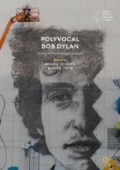Abstract
This introduction summarizes the book’s contents while focusing on the way in which Dylan’s work tends to provoke an odd and striking anxiety about the nature, or finite boundaries, of the literary—an anxiety that became ever more apparent in the days that followed the announcement of his Nobel win. In tracking this anxiety (and comparing it to an eighteenth-century anxiety about the novel), the chapter explores Dylan’s early rejections of musical and literary traditions in the light of his Nobel lecture—a lecture that paradoxically ties his work to traditional forms of literature (i.e., works by Shakespeare, Melville, Homer, etc.). At the same time, the chapter looks to Mikhail Bakhtin’s concept of polyvocality as a way of understanding Dylan’s often contradictory aesthetic gestures.
Access this chapter
Tax calculation will be finalised at checkout
Purchases are for personal use only
Notes
- 1.
These aspects of Dylan’s artistic identity are touched upon in the following chapters—but they are, for the most part, largely assumed (at this point) in most discussions of Dylan’s work. Take, as just a few representative instances, approaches to Dylan such as Aidan Day’s Jokerman (1988), Stephan Scobie’s Alias Bob Dylan (2003), or (more recently) Louis Renza’s Dylan’s Autobiography of a Vocation (2017). See also the final chapter of Josh Toth’s Stranger America: A Narrative Ethics of Exclusion (2018)—that is, “Bob Dylan’s Autoplasticity.”
- 2.
Again, a number of our contributors (like various critics before them) address these interviews—which are almost always defined by Dylan’s various frustrating and humorous evasions. For, though, a succinct summary of Dylan’s refusal to be defined by terms like “poet” or “songwriter”—or, rather, to refuse any specific definition of those terms—see the second section of Chap. 2 (i.e., Damian A. Carpenter’s “Restless Epitaphs”).
- 3.
For a slightly more robust discussion about Dylan’s “delayed” response (and the frustration it provoked) see Emily O. Wittman and Paul R. Wright’s discussion of Dylan’s autobiographical tendencies—in, that is, Chap. 8.
- 4.
The music playing in the background was composed and performed by Alan Pasqua—who was, unexpectedly, and at the 11th hour, contacted by Dylan’s manager. According to Pasqua, Dylan requested something that was “not really melodic, not cocktail, not super jazzy, but sort of background-y piano music” (Pasqua as qtd. in Sisario 2017). Dylan did not offer Pasqua any other information. Pasqua thus composed the music having never read Dylan’s lecture. He was not even told that the requested music was for the lecture. Given that Dylan is a proficient pianist himself, it is unclear why he gave this particular task to Pasqua. However, the odd and ambiguous nature of the request seems to betray a desire on Dylan’s part to imbue the lecture with a certain musicality and a certain dissonance, to stress a certain discordant yet ineffaceable relationship between words and music.
- 5.
On the possibility that Dylan “plagiarized” parts of his lecture—from, of all places, SparkNotes, see Andrea Pitzer’s 2017 article, “The Freewheelin’ Bob Dylan,” in Slate.com . Of course, Dylan’s tendency to borrow—or to “lift” wholesale—parts (or aspects) of other works is relatively well documented at this point.
- 6.
References
Bakhtin, Mikhail. 1981. The Dialogic Imagination: Four Essays. Edited by Michael Holquist and translated by Caryl Emerson and Michael Holquist. Austin: University of Texas Press.
Barth, John. 1984 (1967). The Literature of Exhaustion. In The Friday Book: Essays and Other Nonfiction, 62–76. New York: Putnam.
Barthes, Roland. 1977 (1967). Image-Music-Text. Translated by Stephen Heath. New York: Hill & Wang.
Danius, Sara. 2016. Interview with Sven Hugo Persson. Nobelprize.org , October 13, 2016. Accessed May 4, 2018.
Day, Aidan. 1988. Jokerman: Reading the Lyrics of Bob Dylan. Oxford: Basil Blackwell.
Dylan, Bob. 1965. Liner Notes. Bringing It All Back Home. Columbia.
———. 2004. Chronicles. Volume One. New York: Simon & Schuster.
———. 2017. Nobel Lecture. Nobelprize.org , June 5, 2017. Accessed May 4, 2018.
Honneth, Axel. 2007. “Verwicklungen von Freiheit: Bob Dylan und seine Zeit.” In Bob Dylan. Ein Kongreß. edited by Axel Honneth, Peter Kemper and Richard Klein, 15–28. Frankfurt: Suhrkamp.
Hymes, Dell. 1974. Foundations of Sociolinguistics: An Ethnographic Approach. Philadelphia: University of Pennsylvania Press.
Jones, William. 1810 (1790). Letters from a Tutor to His Pupils. In The Theological and Miscellaneous Works of Rev. William Jones, ed. William Stevens, 265–280. London: F. C. and J. Rivington.
McHale, Brian. 2008. 1966 Nervous Breakdown; or, When Did Postmodernism Begin? Modern Language Quarterly 69 (3): 391–413.
Picoult, Jodi (@jodipicoultPicoult). 2016a. I’m Happy for Bob Dylan. / #ButDoesThisMeanICanWinAGrammy? Twitter, October 13, 2016, 5:24 a.m.
——— (@jodipicoultPicoult). 2016b. Actually, as I Said in the NEXT Tweet, I Like Dylan. He Is a Poet. It Was Just a Gentle Joke. #context #relax! Twitter, October 13, 2016, 7:06 p.m.
Pitzer, Andrea. 2017. The Freewheelin’ Bob Dylan. Slate.com , June 13, 2017.
Renza, Louis. 2017. Dylan’s Autobiography of a Vocation: A Reading of the Lyrics 1965–1967. New York: Bloomsbury.
Scobie, Stephen. 2003. Alias Bob Dylan: Revisited. Calgary: Red Deer.
Shteyngart, Gary (@Shteyngart). 2016. I Totally Get the Nobel Committee. Reading Books Is Hard. Twitter, October 13, 2016, 6:10 a.m.
Sisario, Ben. 2017. ‘A Really Cool Gig’: Playing Piano for Bob Dylan’s Nobel Lecture. The New York Times, June 7, 2017.
Tomkins, Jane. 1985. The Cultural Work of American Fiction 1780–1860. Oxford: Oxford University Press.
Toth, Josh. 2018. Stranger America: A Narrative Ethics of Exclusion. Charlottesville: University of Virginia Press.
Author information
Authors and Affiliations
Editor information
Editors and Affiliations
Rights and permissions
Copyright information
© 2019 The Author(s)
About this chapter
Cite this chapter
Toth, J., Otiono, N. (2019). Introduction: The Foreign Sounds of Dylan’s Literary Art. In: Otiono, N., Toth, J. (eds) Polyvocal Bob Dylan. Palgrave Studies in Music and Literature. Palgrave Macmillan, Cham. https://doi.org/10.1007/978-3-030-17042-4_1
Download citation
DOI: https://doi.org/10.1007/978-3-030-17042-4_1
Published:
Publisher Name: Palgrave Macmillan, Cham
Print ISBN: 978-3-030-17041-7
Online ISBN: 978-3-030-17042-4
eBook Packages: Literature, Cultural and Media StudiesLiterature, Cultural and Media Studies (R0)

